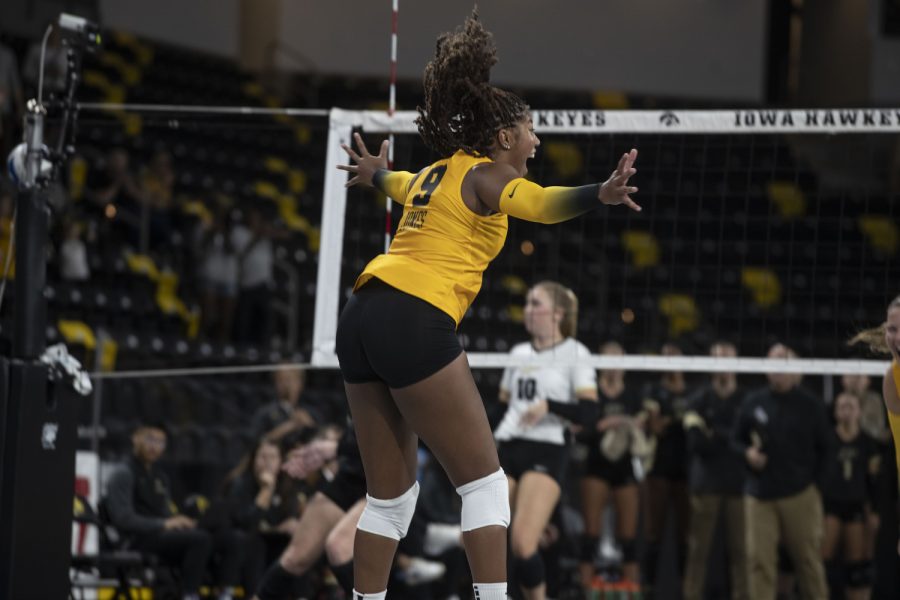The lawns and grasses of Iowa City turned a dull brown and faded away throughout the summer, but the fairways of the Finkbine Golf Course have maintained their green hue and healthy look.
Keeping the course looking like it’s not in the middle of a drought has been far from easy for the golf-course superintendents. Mike Hoffman, who has worked for the golf course for 32 years, said this summer has been one of the more difficult seasons in recent memory.
“It’s been a trying year,” he said. “Most everything we have is irrigated, but there’s still a lot of places we’ve had to run extra water to.”
The course needs at least 1 1/2 to 2 inches of rain per month for healthy upkeep.
It only rained 0.26 inches in July, according to the National Weather Service. And August, too, has still been more than 1 1/2 less than average despite some hefty storms.
Hoffman and the rest of the staff have been meticulous in how they water the course over the past few months. Finkbine has sprinklers set up that water the course at night because the moisture remains in the ground better at cooler temperatures.
Every morning, two or three workers go onto the course with hoses to water some of the drier spots.
They’ve even had to resort to running the sprinklers during the slower parts of the day to maintain the amount of water the course needs.
“We had to move our tee times back a little bit in the mornings because of the watering cycle,” Finkbine Director of Golf Jeff Moore said. “We took a little longer to make sure that everything that needed watering got enough water. Knowing that we weren’t getting any rain, we put a little extra water on the greens and the tee boxes.”
Fortunately, Finkbine has the luxury of a 500-gallon tank that gives the course all the water it needs.
Finkbine had a drop of around 1,000 rounds of golf in July compared with last year. Moore said the drop wasn’t caused by the lack of rain but by the harsh weather.
“I haven’t really noticed any fewer golfers,” said Brendon Cullen, a 20-year-old Iowa City golfer. “On the really, really hot days, there was a little less, but it’s just from the heat.”
Moore says that if the lack of rain continues, they may have to restrict the use of golf carts on certain parts of the course.
Finkbine isn’t in the free and clear yet. Hoffman says the course may suffer next year depending on the rainfall in autumn.
“If we don’t get any moisture going into the winter, it could get a little scary,” he said. “If we have a really [frost-free] winter, that’s when you start to see what’s called desiccation. The greens are really the only thing we could try to water.”
Hoffman said they would like to avoid having to use the irrigation system in the winter because of the possibility of a leak or a break in the lines.
This isn’t the first time Hoffman and the rest of the staff have had to face a drought at Finkbine. In both 1983 and 1987, the course faced a drought but didn’t have the resources of today. The tee boxes and greens were flush, but the rest of the course was an ugly shade of brown.
Hoffman said the course actually suffered more damage two summers ago. The course received too much rain at night and faced too much heat during the day. This process scalded the course.
“I’ve got a really good crew with me,” Hoffman said. “That makes my job a lot easier. I know it’s been hard for a lot of courses in the Midwest. We’ve worked really hard this summer.”






